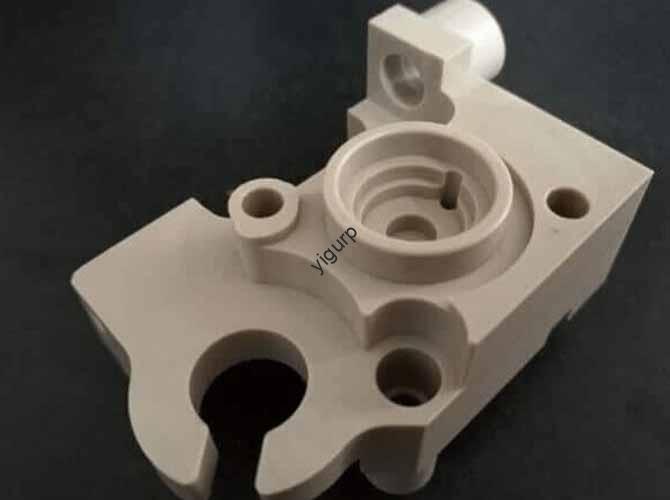Have you ever struggled to find a 3D printing material that’s both durable and flexible—one that can handle repeated bending without cracking or losing shape? Suchen Sie nicht weiter als 3D printing flexible resin. This versatile material has become a game-changer for industries needing parts with elasticity, from medical devices to consumer electronics. Unten, we break down its key types, must-have features, reale Verwendungen, und wie man gemeinsame Herausforderungen meistert.
1. Key Types of 3D Printing Flexible Resin: Das passt zu Ihrem Projekt?
Not all flexible resins are the same—each type has unique strengths for specific applications. The table below compares the three most common options to help you choose:
| Materialtyp | Kernvorteile | Ideale Anwendungen | Kostenbereich (Pro kg) |
| Thermoplastisches Polyurethan (TPU) | Ausgezeichneter Verschleißfestigkeit, oil resistance, und mechanische Stärke; retains flexibility at -40°C to 80°C | Automotive seals, Telefonkoffer, industrial gaskets | \(50- )80 |
| Flexible Polyvinyl Chloride (PVC) | Niedrige Kosten, leicht zu verarbeiten, and good chemical resistance; compatible with most resin 3D printers | Medizinischer Schlauch, door/window gaskets, low-stress toys | \(30- )50 |
| Flexible Epoxy Resins | Superior adhesion to metals/plastics; high chemical stability; heat-resistant up to 120°C | Coatings for electronics, adhesive components, Kleine mechanische Teile | \(60- )90 |
2. Non-Negotiable Characteristics of High-Quality Flexible Resin
What makes a 3D printing flexible resin “high-quality”? These three features are non-negotiable—they directly impact part performance and lifespan:
- High Elasticity: The resin must return to its original shape after being stretched or compressed (bis zu 300% elongation for TPU). Zum Beispiel, a TPU phone case should bounce back to form after being dropped, instead of staying dented.
- Tear Resistance: It needs to withstand physical stress without breaking. A flexible PVC medical tube, zum Beispiel, should handle repeated kinking during use without tearing.
- Chemischer Widerstand: It should resist oils, Lösungsmittel, and common cleaning agents. This is critical for parts like industrial gaskets (exposed to machine oils) oder medizinische Werkzeuge (mit harten Chemikalien sterilisiert).
3. Solving Industry Pain Points: Anwendungen in der Praxis
3D printing flexible resin solves long-standing problems in three key industries. Here’s how it’s making a difference:
A. Medizinprodukte: Safety and Sterility First
Medical manufacturers often struggle to find materials that are both flexible and biocompatible. Flexible resin checks both boxes:
- Anwendungsfall: Custom orthotic insoles. Resin can be 3D printed to match a patient’s foot shape exactly, with TPU variants offering the elasticity needed for all-day wear.
- Lösung: Biocompatible TPU resins (Konform mit ISO 10993) are sterilizable via autoclaving, making them safe for tools like surgical graspers or catheter components.
B. Automobil: Durability for Harsh Environments
Car makers need interior parts that can handle temperature changes and daily use. Flexible resin delivers:
- Anwendungsfall: Dashboard seals. Flexible epoxy resin seals resist heat from the engine (bis zu 120 ° C.) and don’t crack in cold weather, preventing dust or water from entering the cabin.
- Ergebnis: Automakers report a 40% reduction in seal replacement rates compared to traditional rubber parts.
C. Unterhaltungselektronik: Comfort and Protection
Electronics brands want protective cases that feel good in the hand. Flexible resin offers the perfect balance:
- Anwendungsfall: Wireless earbud tips. TPU resin tips conform to the ear canal, providing a secure fit and reducing discomfort during long use.
- Bonus: Resin can be colored or textured during printing, eliminating the need for post-production painting.
4. How to Overcome Common Flexible Resin Challenges
Even the best 3D printing flexible resin can cause issues if not used correctly. Here’s how to fix three top problems:
| Herausforderung | Ursache | Schritt-für-Schritt-Lösung |
| Parts crack after printing | Resin wasn’t cured properly; too much stress during removal | 1. Cure parts for 5–10 minutes in a UV chamber (instead of 2–3 minutes). 2. Use a flexible build plate to reduce removal stress. |
| Resin is too sticky post-print | Incomplete surface curing | 1. Wipe parts with isopropyl alcohol (90%+ Konzentration) after printing. 2. Do a 2-minute “post-cure” under UV light to harden the surface. |
| Schlechte Schicht Adhäsion | Printing temperature too low; resin expired | 1. Heat the resin tank to 25–30°C (most flexible resins perform best here). 2. Check the resin’s shelf life (innen verwenden 6 months of opening). |
5. Perspektive der Yigu -Technologie
Bei Yigu Technology, Wir sehen 3D printing flexible resin as a bridge between design creativity and real-world functionality. We’ve helped clients—from medical device startups to automotive suppliers—cut production time by 35% using our custom TPU and epoxy resins, which are optimized for fast printing and long part life. We’re also developing eco-friendly flexible resins (gemacht mit 20% recycelte Materialien) to meet growing sustainability demands. Für uns, the goal isn’t just to sell resin—it’s to help you build parts that work better, last longer, and solve your unique challenges.
FAQ
- Can 3D printing flexible resin be used for large parts (Z.B., Kfz -Stoßstangen)?
It’s better for small to medium parts (up to 30cm in size). Für große Teile, we recommend combining flexible resin with a rigid core (Z.B., PLA) to balance flexibility and structural strength.
- How long do 3D printed flexible resin parts last?
Mit richtiger Sorgfalt (avoiding extreme heat/solvents), TPU -Teile dauern 2–3 Jahre, while epoxy resin parts can last 4+ Jahre. Für medizinische Geräte, we recommend replacing parts every 6–12 months (per sterilization cycle limits).
- Is 3D printing flexible resin compatible with all resin 3D printers?
Most modern resin printers (with UV light sources of 405nm) arbeiten, but check your printer’s specs first. Avoid using flexible resin in entry-level printers with weak UV lamps—this leads to poor curing.
